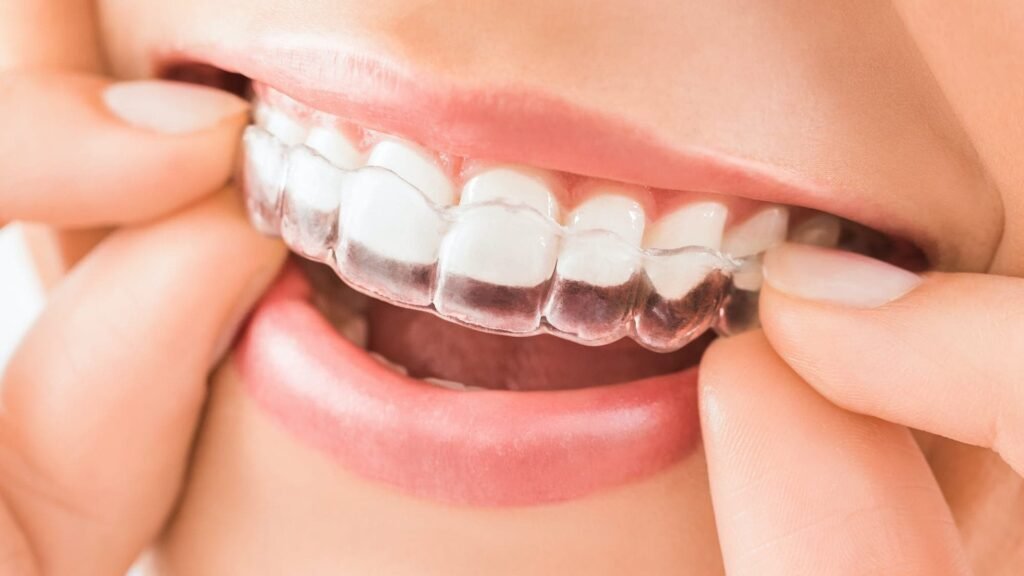Invisalign has transformed the field of orthodontics by offering a more discreet, comfortable, and flexible alternative to traditional braces. But while most people understand what Invisalign looks like, fewer know how it actually works to move teeth into better alignment. Behind its sleek, clear design lies a sophisticated combination of digital planning, biomechanics, and material science.
Here’s an in-depth look at how Invisalign works—and the advanced science that powers each step of your smile transformation.
1. Digital Scanning: A High-Tech Starting Point
Intraoral Scanning and Imaging
Invisalign treatment begins with a 3D digital scan of your teeth using an intraoral scanner (such as iTero). This scan captures a highly accurate, interactive image of your teeth and bite without the mess of traditional impressions.
Why It Matters:
- Instant, precise digital models of your teeth
- Allows orthodontists to spot misalignments, crowding, gaps, or bite issues
- Enables a comfortable and non-invasive first step
2. Smart 3D Treatment Planning
ClinCheck Software
Using Invisalign’s proprietary ClinCheck® software, your orthodontist maps out a step-by-step plan to move your teeth from their current position to the desired outcome. The software calculates how each tooth should move and when—factoring in both biological and mechanical limits.
Why It Matters:
- You can preview your final smile before treatment begins
- The software breaks your treatment into a series of micro-movements
- Ensures efficient and safe tooth movement over time
3. Custom Aligner Fabrication with SmartTrack Material
Once your plan is approved, a series of custom aligners is manufactured using a specialized plastic called SmartTrack®, a patented material developed exclusively for Invisalign.
What Makes SmartTrack Special:
- Strong yet flexible, providing consistent force over time
- Designed to hug teeth tightly for better control
- Comfortable, smooth edges to reduce irritation
Each aligner is slightly different, gradually shifting your teeth closer to their ideal position.
4. Biomechanics of Tooth Movement
How Teeth Move
Tooth movement relies on a biological process called bone remodeling. When gentle pressure is applied to a tooth, it stimulates bone cells to break down bone on one side (resorption) and rebuild it on the other (deposition), allowing the tooth to move through the jawbone.
Invisalign’s Role:
- Each aligner exerts controlled force on specific teeth
- Aligners are changed every 1–2 weeks, with each tray continuing the movement process
- Movement is staged carefully to prevent overloading or damaging teeth or roots
5. Attachments and Precision Cuts (Optional Enhancements)
In more complex cases, Invisalign may use SmartForce® attachments—small, tooth-colored shapes bonded to teeth—to improve grip and control tooth movement.
Additional Tools:
- Attachments: Help guide rotational or vertical movements
- Elastic bands: Used to correct bite or jaw alignment issues
- Precision cuts: Allow the use of rubber bands directly with aligners
These tools expand Invisalign’s capabilities, making it suitable for more complex orthodontic corrections.
6. Patient Compliance: A Key to Success
Unlike fixed braces, Invisalign aligners are removable, which gives you freedom—but also places responsibility on the patient.
Treatment Success Depends On:
- Wearing aligners 20–22 hours per day
- Following your orthodontist’s instructions carefully
- Using chewies to seat aligners snugly and consistently
Missing wear time can delay progress or compromise results.
7. Monitoring Progress with Fewer Office Visits
Invisalign often requires fewer in-office visits than traditional braces. Your provider may give you several sets of aligners at once and use digital tracking apps (like Invisalign Virtual Care) to monitor your progress remotely.
Why It Matters:
- Ideal for busy professionals, students, or frequent travelers
- Less disruption to your schedule
- Technology keeps your treatment efficient and on track
8. Final Retention Phase: Keeping Your New Smile in Place
Once the active treatment phase is complete, you’ll receive a retainer to keep your teeth in their new position. Invisalign offers Vivera® retainers—clear, durable retainers designed using the same high-quality digital process.
Why Retention Is Crucial:
- Prevents relapse (teeth shifting back)
- Protects your investment in your smile
- Usually worn nightly at first, then less frequently over time
✅ Summary: How Invisalign Straightens Your Teeth
| Step | What Happens |
|---|---|
| Digital Scan | 3D scan of your mouth replaces traditional molds |
| Treatment Planning | AI-powered software maps out each stage of tooth movement |
| Custom Aligners Fabrication | SmartTrack® plastic aligners are created for your unique treatment plan |
| Biomechanics & Aligners | Aligners apply gentle pressure to trigger natural bone remodeling |
| Attachments/Elastics (if needed) | Help guide more complex movements or bite corrections |
| Wear Schedule | Aligners are worn 20–22 hours/day and changed every 1–2 weeks |
| Monitoring | Progress tracked through check-ups or digital tools |
| Retention | Vivera retainers maintain your smile after treatment ends |
Final Thoughts
Invisalign combines cutting-edge materials, advanced digital planning, and biological science to deliver precise, predictable results in a discreet and patient-friendly way. It’s more than just a cosmetic upgrade—it’s a sophisticated system rooted in science and designed for comfort, efficiency, and lifestyle flexibility.




